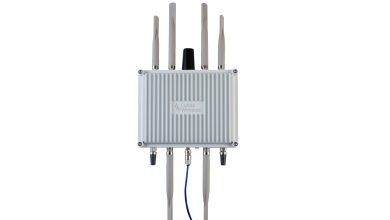AECC members Ericsson & Toyota partner for next-gen connected vehicle services

WAKEFIELD, Mass.— April 11, 2024 — The Automotive Edge Computing Consortium (AECC) announced that AECC members Ericsson, a telecom, providing the infrastructure, software and services that keep mobile networks running smoothly, from 3G to the cutting-edge 5G, and Toyota have undertaken a pioneering proof of concept (PoC) designed to advance the efficiency and reliability of remote driving and infotainment streaming connected vehicle services. This is done to address the issue that the connected vehicle services of the future are poised for a transformative leap, driven by the immense potential of big data. However, to ensure the success of data-intensive services like remote driving and infotainment streaming, it’s crucial to address network congestion, which can significantly hinder performance. To address this issue,
The AECC’s distributed computing architecture approach optimizes existing 5G and Edge network resources. The AECC POC addresses current network congestion challenges, ultimately improving the user experience and the transformative potential of these technologies.
“The collaborative AECC POC effort represents a significant milestone in the realm of connected mobility services. The PoC addresses pressing challenges such as network congestion through strategic rerouting of services. Moreover, it leverages cutting-edge Edge computing technologies, paving the way for a smarter, more efficient future. This innovative approach not only optimizes existing network resources. It also sets the stage for seamless integration and promising implications for future mainstream services,” said AECC President and Chair Dr. Ryokichi Onishi, a Principal Engineer and General Manager at Toyota Motor Corporation.
The AECC Proof of Concept (PoC) focused on remote driving. It highlighted the need for low latency and high bandwidth for infotainment streaming services. Moreover, the team successfully demonstrated the ability to reroute Edge computing and 5G network resources. This also ensures smooth data flow and optimal user experience based on service requirements. Key highlights include:
- Service Optimization: The experiment prioritized remote driving and infotainment streaming. It dynamically rerouted traffic to alleviate congestion and showcased dynamic resource allocation.
- Seamless Integration: Advanced monitoring tools in the Edge platform swiftly detected congestion, enabling uninterrupted service delivery through dynamic traffic rerouting.
“By alleviating network strain for these value-added services, the POC paves the way for these services to generate revenue for operators. While this POC exceeds current market offerings, the demonstration holds immense promise for future integration into mainstream connected mobility services,” said AECC Secretary Christer Boberg, Head of Technology and Strategy, Global Network Platform, Ericsson.
Participate in the AECC’s Proof of Concept Program
Organizations interested in collaborating with AECC members on a POC can initiate the process by contacting ProofofConcept@aecc.org.
Collaborate with OEMs, MNOs, Cloud Providers and App Players
All companies interested in contributing to the connected vehicle services ecosystem are encouraged to become AECC members. Moreover, AECC membership is open to organizations across any business vertical.
News related to AECC –


